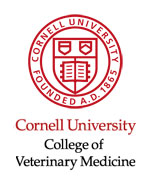"What is this Infamous 'Wildlife / Livestock
Interface?' -
A Review of Current Knowledge on the Subject"
Richard Kock
With the exponential growth of human populations in Africa
over the last century, the inevitable decline in wildlife
habitat and populations has been rapid. The loss has been
primarily in areas of human settlement and agriculture, as
here, the habitat loss is extreme. Wildlife survives increasingly
in pockets of land peripheral to these areas as a result
of the establishment of protected area systems (parks, reserves
and sanctuaries) or in the remaining forests, wetlands and
vast arid rangelands of Africa, which have not been settled
or exploited. Africa is now a mosaic from developed landscapes
to relatively unchanged habitats, which recall pre-ice age
communities. Probably the most stable systems over the last
centuries, where the habitats have remained relatively intact,
are the dry rangelands. These areas are less attractive to
human settlement as the environment and climate are harsh
and agriculture is limited by low rainfall and nutrient-poor
soils. Consequently, these are areas with a lower human density
and the livelihoods are often based on pastoral livestock
and now rarely, hunter-gatherer systems. Ironically, due
to lack of political empowerment and cash poverty, these
traditional communities are considered backward and unproductive
by urban society whereas they should be praised for their
more environmentally sustainable land-use practices, and
means sought to enhance their incomes without destroying
their way of life.
When considering the “Wildlife/Livestock Interface,”
the understanding for this paper is that the wildlife component
comprises the large mammals, which in one way or another
interact with the livestock population and more specifically,
herbivores. It is here in particular that the scene is changing
and novel problems are arising. This does not mean the remaining
animals—carnivores, reptiles and so on—are not
important. The impact of predation and the prevalence of
snakebites on livestock might be examples! These subjects
are best dealt with in other fora.
A major impact of the changing landscape has been increasing
competition for the finite resources and it is here that
the interface has become more apparent and contact more frequent.
In summary, the “Wildlife/Livestock Interface” has
become more intense in certain areas, whilst it is no longer
an issue in many others.
The interface can present itself in many different ways and
a better definition of the interface is needed where it has
a real impact economically or in terms of health on either
the livestock or wildlife populations. This will help in
clarifying the issues and focusing research and management
efforts appropriately. The subject is large and this paper
will only review the more important animal health issues
at the interface:
• Diseases of importance that pass between wild and domestic animals
at the physical interface with a focus on infections impacting trade in animals.
• Diseases that are transmitted through vectors between livestock and
wildlife and the influence each community has on the overall prevalence and
impact of the disease.
• Contact rates in relation to the competition for the resources shared
between wildlife and livestock – forage and water.
|
|











